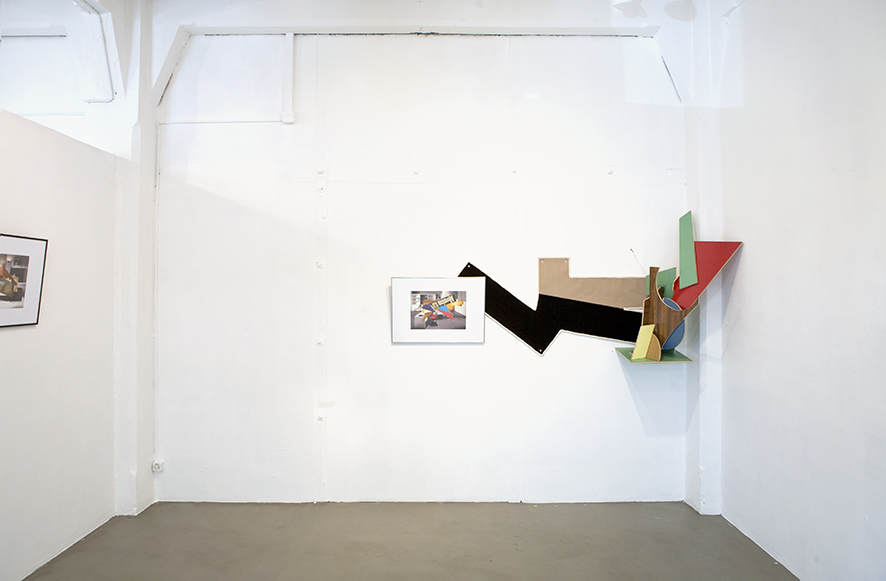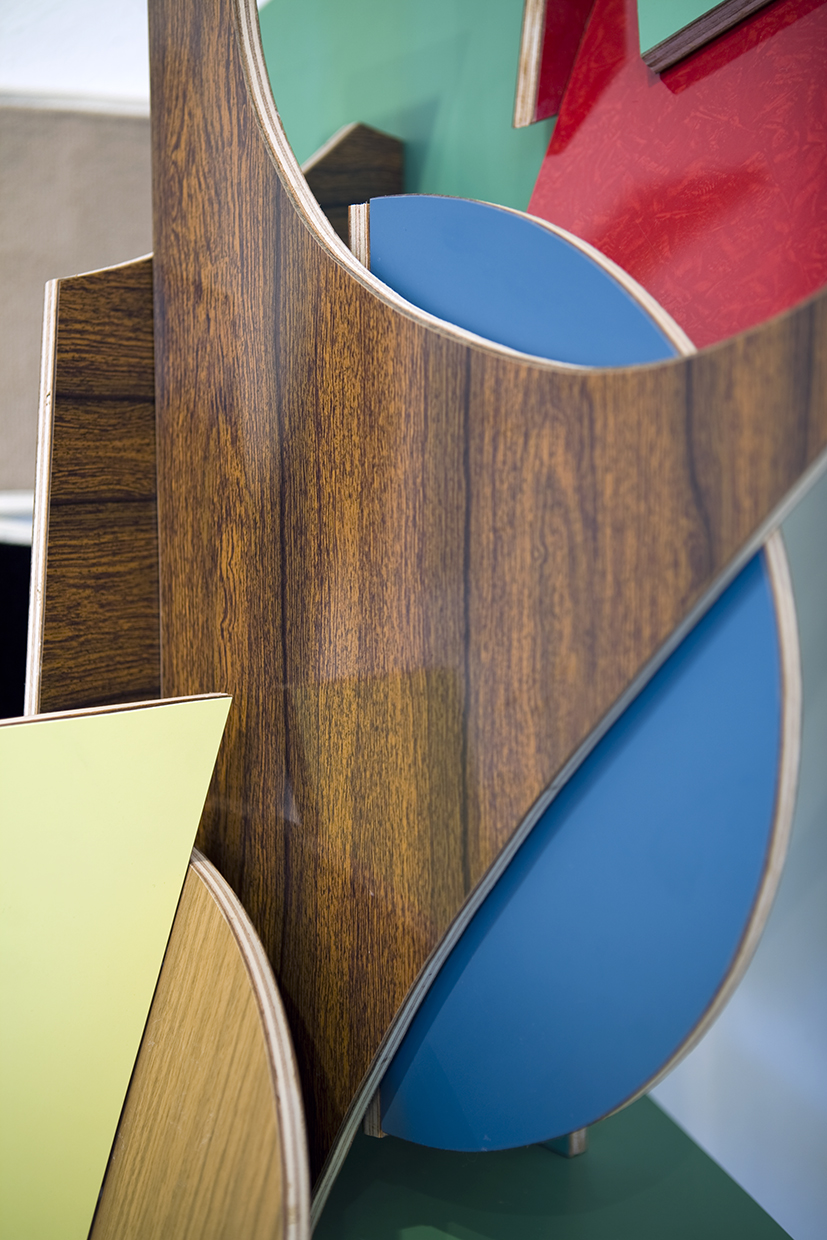Ikebana arrangement 4
![]()
Ikebana Arrangement 2014
plywood, Formica, painting
110 x 50 x 50 cm












Monster world (A terrifying tales of a mad doctor)
2014
collage on paper
50 x 70 cm
(series of 12)





Ikebana Arrangement
vue de l'installation
Contreplaqué, Formica, collage sur papier
et collage de moquette
2014
Galerie Forma art contemporain, Lausanne
Photo © Shannon Guerrico
Avec cet ensemble inédit de collages et sculptures, Cascio poursuit une recherche artistique qui se concentre sur la manière de percevoir la réalité et d’en représenter les multiples facettes. Cette investigation prend en considération autant l’imaginaire lié aux objets du quotidien que l’inconscient, dans la tentative de créer une relation entre la forme des oeuvres et la sensation profonde qu’elles suscitent chez l’obser- vateur. Qu’il s’agisse de fragments de papier, de textiles, de planches de bois peintes ou plaquées de formica, le point de départ du processus créatif est le collage. De la feuille en papier jusqu’à l’installation, cette technique permet à l’artiste d’opérer un bouleversement des hiérarchies de fabrication et de lecture de l’oeuvre. Du point de vue formel, ses sculptures, assemblages colorés qui se composent sous nos yeux, sont mises en relation avec l’idée de tableau, de surface plane. Par leur apparente légèreté, à mi-chemin entre bi et tridimensionnalité, ces travaux transforment la perception classique de la sculpture. La dimension poétique se révèle dans les collages en papier. Ces derniers ont été composés en partant d’images d’un luxueux catalogue de mobilier, destiné à décorer les bureaux des succesfull people des Années ’80. Le style du mobilier, la manière épurée de le présenter et la lumière crue des photographies nous ramènent à un univers rationnel et concret.A ce monde figé, non exempt de violence, Cascio appose, délicatement, comme des fleurs, des éléments qui relèvent de l’irrationnel, affirmant ainsi la puissance de la pensée humaine dans tous ses états.
Galerie Forma art contemporain, Lausanne.
Ikebana
Forma Art contemporain
Lausanne
2014
“On the southern banks of Helvetia, mundane but not so much”
by Achille Piotti
To underscore Davide Cascio's latest intellectual and artistic achievements, the exhibition Ikebana, from the Japanese Ikeru “a disciplined art form in which nature and humanity are brought together” is presented by the gallery Forma-Art in Lausanne1 . An homage to the historical fashion of Chinoiserie which “in a broader scope refers to a mixture of Eastern and Western stylistic elements for both the decoration and shape”2
Similar to diverted photons leaving a continuous mark on a sensitive plate, the line is the first observable track from the atomic world made of waves. Its direction is but an escaping moment in quantum theory, a question of probabilities which clashes with the certainties of classical physics. It carries doubts on the plausibility of our measurements but opens new frontiers and discoveries in the field of sciences.
The work of Davide Cascio focuses on this doubt surrounding the reality in all its force. Since the beginning of his career, Cascio addresses subjects of intellectual depth exploring the meaning of utopia. In his work he copes with an unattainable world where he treats themes revolving around political theory (understood as the organisation of society), architectural structure (its first plastic and functional proof) and literature (of epical genre in praise of the exploratory spirit). As in the works of San Girolamo, Golem or Polyhedra, the idea of a frontier between narration and reality out-branches into a complex web of literary, philosophical and esthetic references sculpted into an installation made of candid materials and geometrical lines.
Cascio's exploration follows an eclectic course subject to the employment of different visual techniques. He applies iconographic collages to his installations to portray human epics from West to East along the Mediterranean shores. He then sails farther away on the waters of the Atlantic where James Joyce is a prelude to the postmodern age of Aldous Huxley. Throughout his career he dialogues with different traditions starting from his artistic and intellectual journeys to Rome in Italy, Athens in Greece and El Cairo in Egypt. Similar to postcards from his routes, these iconographic collages crop the intimacy of a distant miniaturized world made of warm colors and figurative pictures. In it he employs geometrical lines, typical of Islamic art, to escape the burden of time. To display his internal anguish, Cascio resorts to structural elements which cope with the idea of human challenge related to the Odyssey, the Italian Dantesque pilgrimage or James Joyce modern Ulysses but also, we may suggest, with the premedieval oriental literature such as the Sufi conference of Birds by Attar of Nishapur. The outcome is his monastic inclination for a world of artistic representation along the lines of Persian miniatures. From simple and linear elements of Arte Povera with faded shades of dark to light, typical of Renaissance mannerism, he shifted as a matter of fact to the celebration of plasticity with modern flamboyant colors which surface in a multifaceted reality. In his new approach he departs from questions surrounding the atomic universe to find a new balance of thoughts and poetical colors connected to the perceived material world. His infinitely small universe makes the transition into what physicists call the theory of decoherence. A more classical view where flowering interconnections between visible elements are produced without any instability3.
1http://en.wikipedia.org/wiki/Ikebana
2http://en.wikipedia.org/wiki/Chinoiserie
3 Wojcieh Zureck, Decoherence of the Transition from Quantum to Classical, Physics Today, 44, 1991,10, p.36

